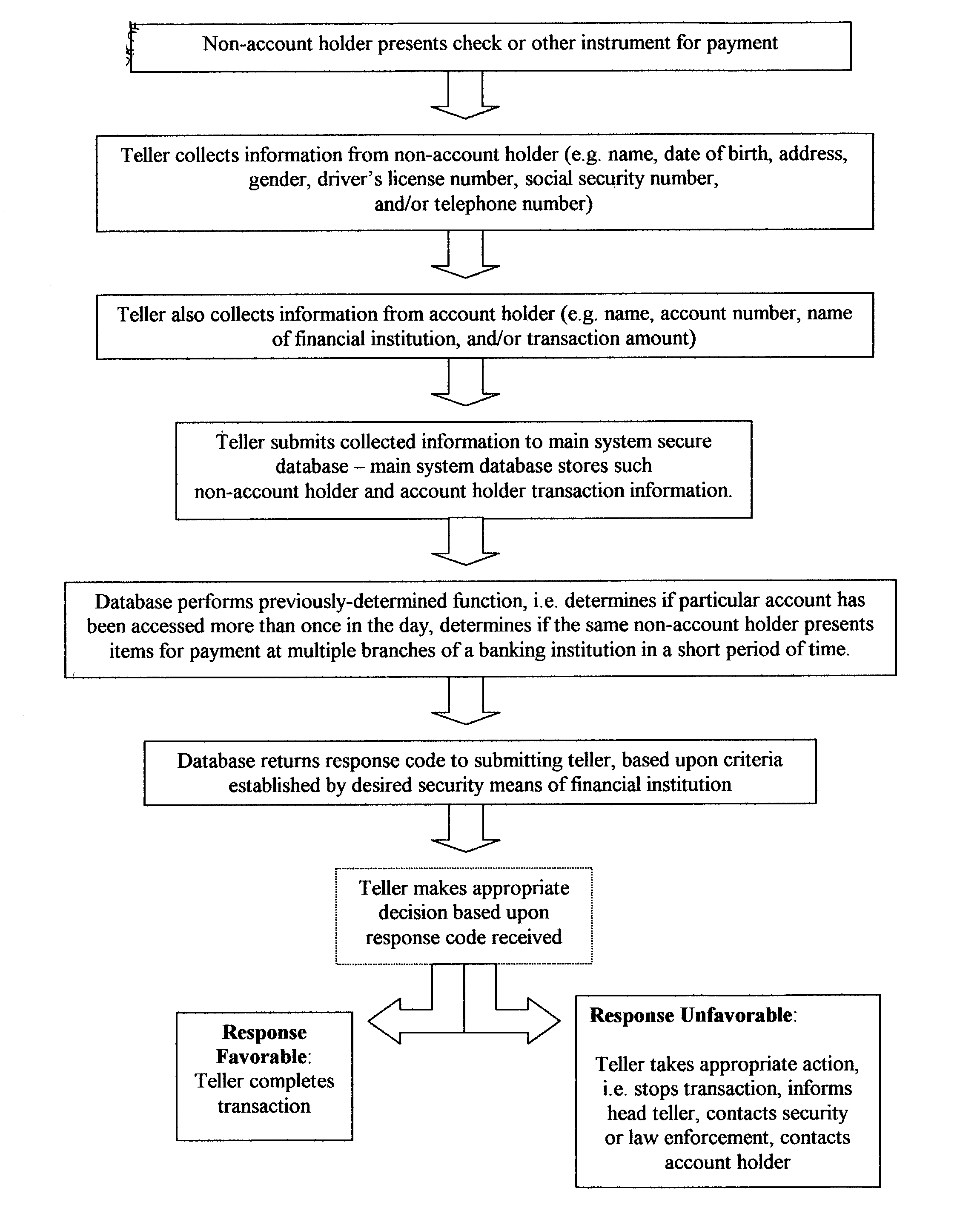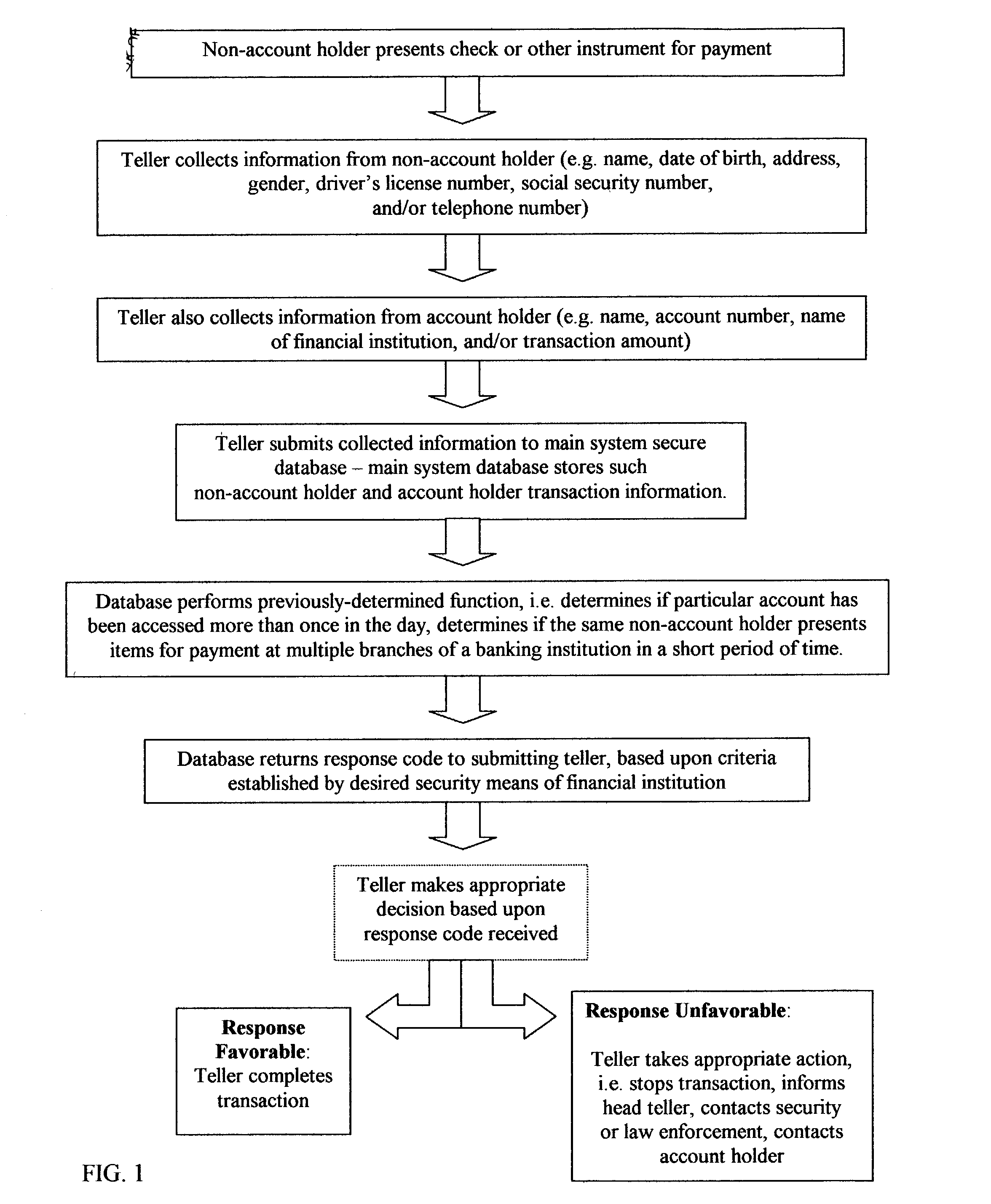Fraud detection and security system for financial institutions
a fraud detection and security system technology, applied in the field of fraud detection and security system for financial institutions, can solve the problems of "at risk" of additional fraudulent transactions, and the gopinathan system does not function to collect or analyze information relating to particular non-account holders
- Summary
- Abstract
- Description
- Claims
- Application Information
AI Technical Summary
Benefits of technology
Problems solved by technology
Method used
Image
Examples
Embodiment Construction
[0029] FIG. 1 is a flowchart illustrating the principal stages of utilization of the present system, using a standard transaction for the purposes of example.
[0030] To understand both the need for the present system and the unique effectiveness it provides, it is important to first consider the nature of certain fraudulent practices regarding banks and financial institutions. Generally, organized crime rings exist worldwide and participate in a variety of financial-related criminal behavior. In addition to the counterfeiting of written instruments, such organizations participate in stealing legitimate financial instruments, forging or altering them, and cashing them without any method in place to prevent such losses. The fraud rings often utilize fictitious identification for such purposes, and even contract with legitimate persons with legitimate identification to conduct their legitimate transactions for a fee. On a consistent and regular basis, then, the organizations cash stolen...
PUM
 Login to View More
Login to View More Abstract
Description
Claims
Application Information
 Login to View More
Login to View More - R&D
- Intellectual Property
- Life Sciences
- Materials
- Tech Scout
- Unparalleled Data Quality
- Higher Quality Content
- 60% Fewer Hallucinations
Browse by: Latest US Patents, China's latest patents, Technical Efficacy Thesaurus, Application Domain, Technology Topic, Popular Technical Reports.
© 2025 PatSnap. All rights reserved.Legal|Privacy policy|Modern Slavery Act Transparency Statement|Sitemap|About US| Contact US: help@patsnap.com


